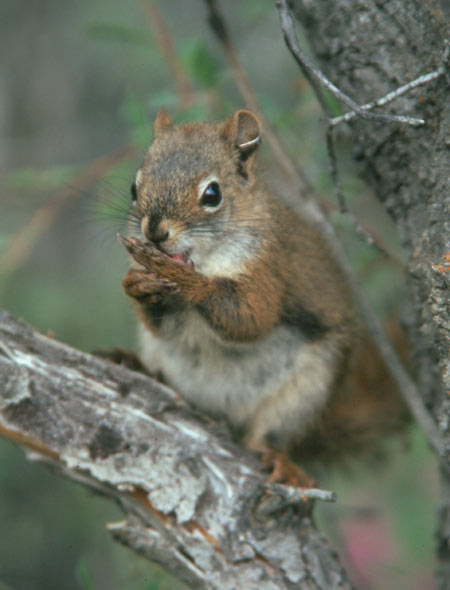Animal DNA Changing with Climate, Study Finds

Longer growing seasons have caused genetic changes in a wide range of animals in the past few decades, biologists announced today.
As the spring reproductive season arrives earlier and lasts longer in northern latitudes, a fact owing to climate change, animals that can adapt their schedules stand a better chance of seeing their genetic information passed on to later generations, leading to a change in gene frequencies within populations.
The shift could have substantial economic impacts as well. As premium growing seasons shift northward, Canada could become an agricultural powerhouse as the United States turns into a dustbowl, the researchers said.
The study is detailed in the June 9 issue of the journal Science.
Northern changes
Studies have shown that global warming is acting fastest at the most northern latitudes, resulting in longer growing seasons. The change is also alleviating winter cold stress without imposing summer heat stress.
"Spring is coming earlier and fall is coming later," said study co-author Christina Holzapfel, a biologist at the University of Oregon. "The conditions that you experience in the North are becoming way more like you'd expect them in the South."
Sign up for the Live Science daily newsletter now
Get the world’s most fascinating discoveries delivered straight to your inbox.
Animals depend on the day length to decide when to reproduce, hibernate , and migrate, Holzapfel explained. Although the amount of sunlight on a given day remains unchanged from year to year, the temperature on those days is steadily climbing.
Many animals time their migrations and reproductive habits so they arrive in an area at the same time food is most abundant, but some food items sprout in response to warm temperatures and are becoming available earlier in the season. In some cases, animals are showing up as the food source is starting to fade, leading to a decrease in fitness and survival of offspring.
Reproductive flexibility
To meet these challenges, Canadian red squirrels, European blackcaps, and penguins are all kicking off breeding season earlier to take to synch up with seasonal food supplies.
"Take great tits for example," explains study co-author William Bradshaw, also of the University of Oregon. These European birds rely on day length to decide when to lay eggs so plenty of caterpillars will be available to feed their hatchlings.
But the caterpillars respond to warming temperatures and are arriving earlier in the season. Since the birds are still following daylight cues, there are fewer caterpillars left to feed hungry chicks when the eggs hatch, leading to lower fitness and survival rates.
Some of these birds have displayed the ability to keep up with the caterpillars by breeding earlier. Because their chicks get plenty of caterpillars and stand a better chance of surviving, the parents that operate on a flexible schedule increase the likelihood that their own genetic traits endure.
Although the exact gene garnering this flexibility hasn't been identified, the frequency of the trait will increase in the population as the flexible birds continue to out-compete those that fail to adapt.
"Natural selection is acting on gene frequency. When you get a change of those frequencies, that by definition is evolution," Bradshaw told LiveScience.
Other impacts
While shrinking glaciers and animals struggling to adapt to a changing global climate might grab all the headlines, pathogens that require a longer growing season could emerge, Holzapfel said. The shift could also have large economic impact, particularly related to agriculture.
"Corn does not currently grow in central or northern Canada because the growing season is not long enough," Bradshaw said. "With increased growing season, the Canadians will be able to grow more corn."
Although the northward shift of the long growing season could be a boon to Canadian farmers, it could also spell disaster for their American counterparts.
"The United States is going to be a dustbowl as the agricultural belt moves north," Holzapfel said. "We are already seeing this in the massive droughts in Africa."
Hot Topic
The Controversy
- Conflicting Claims on Global Warming and Why It's All Moot
- Baffled Scientists Say Less Sunlight Reaching Earth
- Scientists Clueless over Sun's Effect on Earth
- Greenhouse Gas Hits Record High
- Key Argument for Global Warming Critics Evaporates
The Effects
- Seas to Rise
- Greenland Melts
- Ground Collapses
- Glaciers Disappear
- Allergies Get Worse
- Rivers Melt Sooner in Spring
- Increased Plant Production
- Animals Change Behavior
- Hurricanes Get Stronger
- Lakes Disappear
The Possibilities
- More Rain but Less Water
- Ice-Free Arctic Summers
- Overwhelmed Storm Drains
- Worst Mass Extinction Ever
- A Chilled Planet
Strange Solutions










